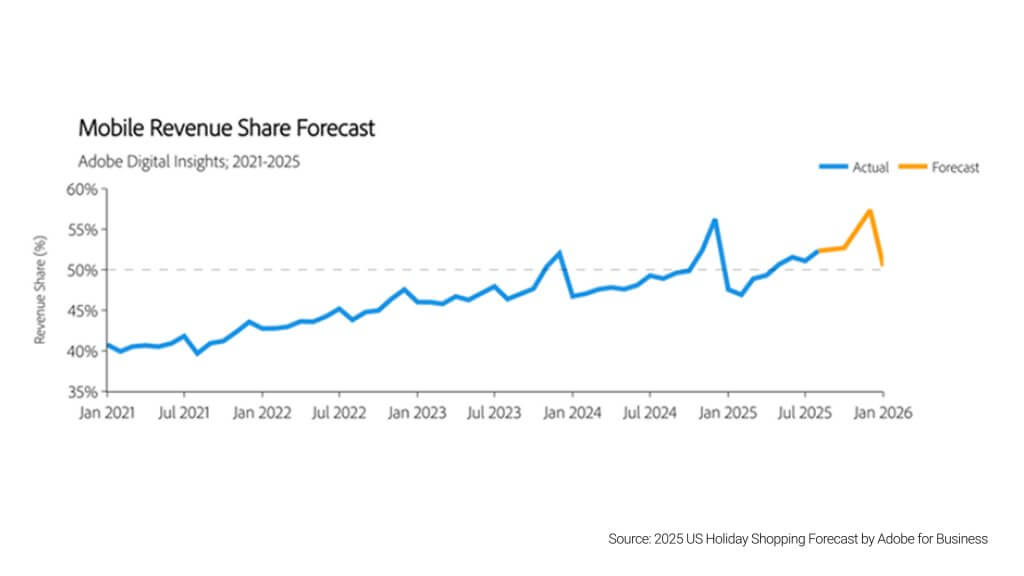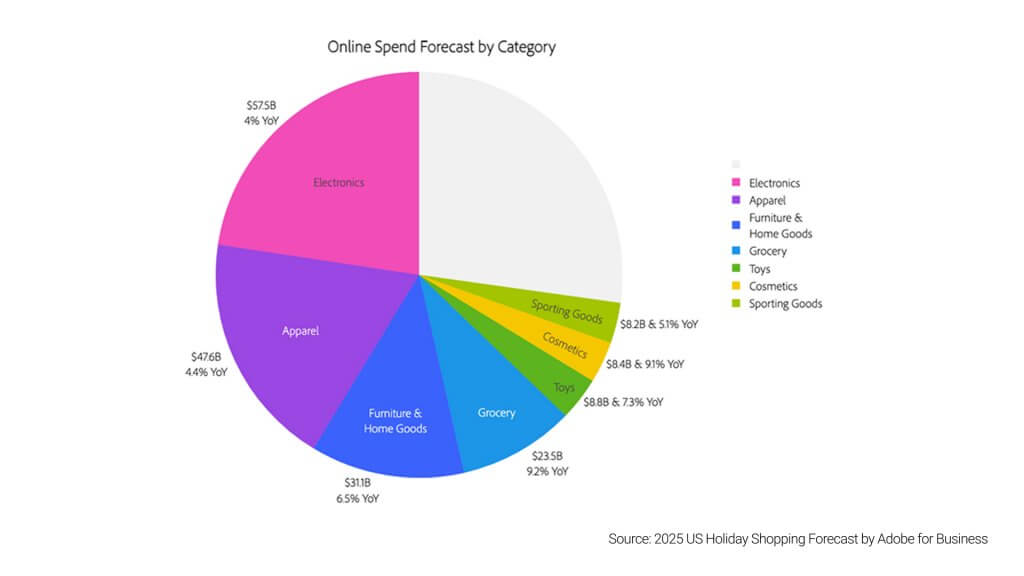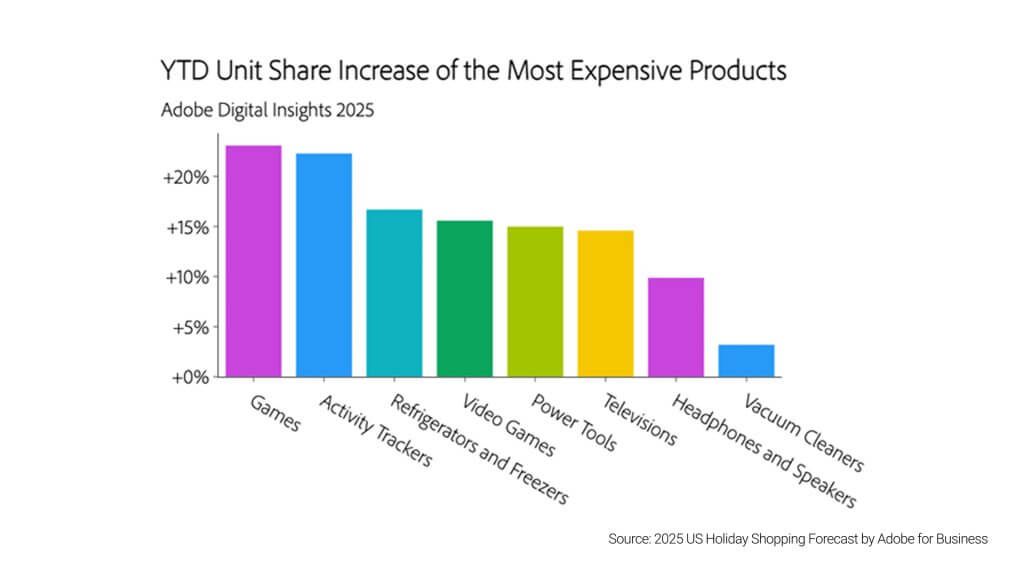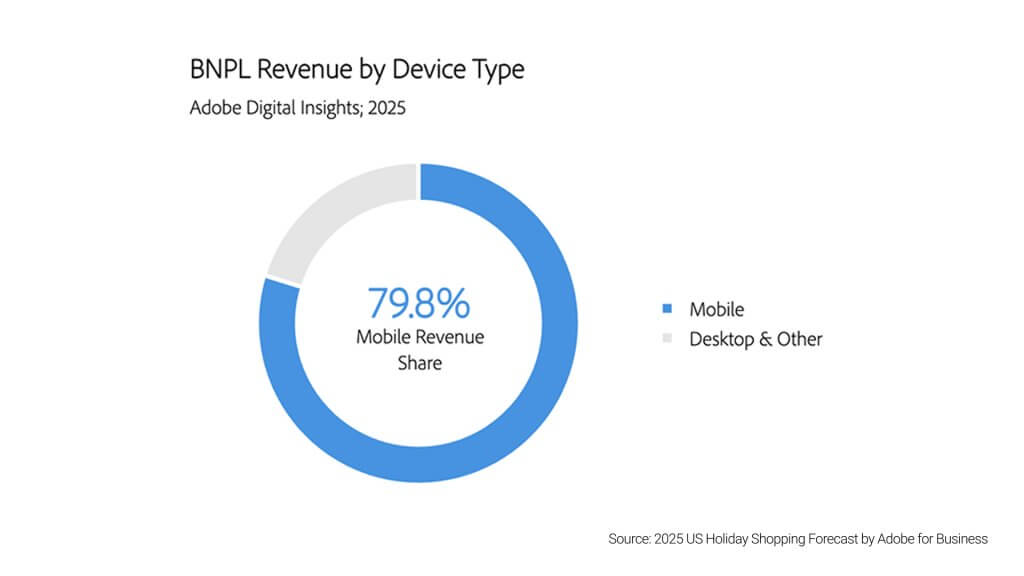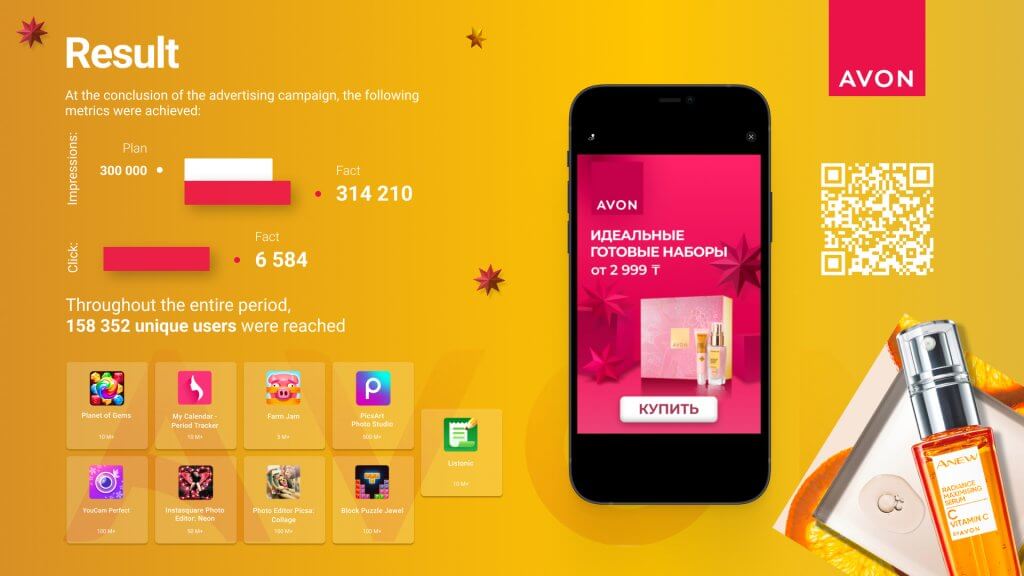How to Prepare for the Holiday Season: U.S. E-Commerce Market Forecast
The 2025 holiday season is set to become one of the most competitive and digitally driven periods in the U.S. e-commerce market. Online sales are projected to surpass $250 billion for the first time, creating both vast opportunities and significant challenges for retailers striving to stand out in a saturated market where every click matters.
According to the latest Adobe for Business Holiday Forecast, mobile has become the centerpiece of shopping behavior, driving the majority of online transactions. Consumers are not just browsing but completing their entire purchase journey on smartphones — from discovering discounts to using Buy Now, Pay Later options at checkout.
This article explores the key trends shaping holiday e-commerce in 2025: shifting consumer habits, the rise of mobile-first strategies, and the growing importance of programmatic mobile advertising as brands compete for visibility and conversions in the final weeks of the year.
The Importance of Mobile-First in the U.S. E-Commerce Market
Mobile devices have firmly established themselves as the primary format for online shopping. The year 2025 will become the first full year in which more than 50% of all online purchases are made on mobile devices.
According to Adobe’s forecast, mobile revenue share during the holiday season will reach a record 56.1%, with 7 out of 10 online retail visits taking place on mobile devices.
Popular Product Categories During the Holiday Season in the U.S.
Growth is expected across various categories:
• Electronics — projected sales volume of $57.5 billion (+4% year-over-year)
• Groceries — expected to generate $23.5 billion in revenue. This is above the average seasonal level but below last year’s 12.9% increase.
• Cosmetics — expected to reach $8.4 billion (+9.1%)
• Apparel — projected spending of $47.6 billion (+4.4%)
• Toys — forecasted growth of 7.3%, reaching $8.8 billion
• Furniture and home goods — expected growth of 6.5%, with $31.1 billion in revenue
• Sporting goods — projected to generate $8.2 billion (+5.1%)
The 2025 holiday season in the U.S. e-commerce market promises steady growth across all major categories. The highest revenues are traditionally expected from electronics, apparel, and home goods, while cosmetics and toys show the strongest growth rates, reflecting a shift in consumer priorities toward personal care and gifting.
Growth in the grocery and sporting goods segments also highlights consumers’ focus on comfort and healthy lifestyles. Overall, these figures confirm that Americans continue to spend actively during the holidays, with mobile shopping and personalized offers emerging as key drivers of sales.
Shoppers Choose Quality Over Discounts
In 2025, consumer behavior in the U.S. e-commerce market has undergone a noticeable shift: the focus is moving from chasing the biggest discounts to seeking the best balance between price and quality. Online shoppers have become more selective and are increasingly willing to pay more for products that are perceived as reliable and long-lasting.
Holiday sales growth is expected across categories such as games, video games, large home appliances, televisions, and vacuum cleaners — segments that show a clear preference for premium products.
One of the key factors behind this shift is the narrowing price gap between premium and budget goods. According to Adobe, in 2025, the lowest-priced products have seen 0.8% smaller price drops during discount and deflation periods, while being more heavily affected by inflation, making premium options increasingly attractive to consumers.
Mobile Devices Power the Growth of BNPL in the U.S. E-Commerce Market
The Buy Now, Pay Later (BNPL) trend continues to reshape consumer spending habits in the U.S. e-commerce market, with mobile devices emerging as the dominant channel for installment-based purchases. The vast majority of BNPL transactions are now made via smartphones, reflecting how convenience and accessibility are driving purchasing behavior.
From January 1 to August 21, 79.8% of all BNPL revenue came from mobile devices — a clear sign that shoppers prefer completing their financing plans directly from their phones. During the upcoming holiday season, this share is expected to remain consistently high, ranging between 79% and 85%, translating into $15.6–$17.3 billion in BNPL purchases made through mobile.
For comparison, in the 2024 holiday season (November 1–December 31), mobile BNPL spending reached $14.4 billion. The steady year-over-year increase highlights how mobile-first consumer behavior continues to shape the retail landscape, as shoppers value flexibility and convenience when managing payments during the busiest shopping period of the year.
GenAI Traffic Continues to Surge — Set to Peak During the 2025 Holiday Season
Traffic from Generative AI (GenAI) sources to retail websites continues to accelerate rapidly across the U.S. e-commerce market, marking one of the most transformative shifts in digital shopping behavior. In August, GenAI-driven traffic increased by 1,500% year-over-year and nearly 300% since January, highlighting the explosive adoption of AI-powered assistants among consumers.
This holiday season, traffic from GenAI referrals is projected to grow by 515–520% YoY. Today, 3 out of 4 consumers are familiar with AI assistants, and more than one-third have already used them for online shopping. Nearly 80% of shoppers report turning to AI assistants more frequently during high-stakes retail moments, such as major sales or holiday events.
This data suggests a clear trend: GenAI is evolving from a novelty into a mainstream shopping companion. Its growing influence is reshaping how consumers find products, compare deals, and make purchase decisions.
While desktop remains the primary source of AI-driven website visits, mobile traffic is steadily closing the gap. Since the beginning of 2025, the share of mobile visits referred by AI assistants has grown by 44%. It highlights how users are increasingly relying on smartphones for discovery and shopping recommendations powered by GenAI.
As of August, 27% of AI-driven traffic originated from mobile devices, compared to 73% from desktop. However, this balance is expected to continue evolving — by the upcoming holiday season, the mobile share is projected to reach around 30%.
This trend underscores the growing importance of mobile-first optimization for retailers.
The Role of Mobile Advertising in the 2025 U.S. E-Commerce Market
As mobile becomes the dominant force in the U.S. e-commerce market, brands are facing a new reality. The entire customer journey — from inspiration to purchase — now happens on smartphones.
Consumers discover deals through apps, compare prices using AI-powered assistants, and finalize payments via Buy Now, Pay Later (BNPL) options, all without switching devices.
In this mobile-first environment, mobile advertising plays a decisive role. It allows brands to connect with users at every stage of the purchase funnel — from awareness to conversion — delivering personalized messages based on interests, location, and behavior patterns.
Unlike traditional display or desktop advertising, mobile in-app formats provide higher engagement, visual impact, and measurable performance, making them especially effective during the holiday shopping rush when competition for attention peaks.
How BYYD Helps Brands Win the Holiday Season
Through its advanced programmatic capabilities, BYYD enables brands to:
- Reach high-intent audiences within mobile apps using precise targeting parameters such as demographics, interests, and geolocation.
- Optimize campaign performance in real time, ensuring maximum ROI during high-traffic periods like Black Friday and Christmas.
- Leverage Big Data and AI-driven insights to personalize creative messages and identify which user segments drive the most conversions.
- Integrate brand-safe and viewable ad placements to maintain trust and visibility across the most relevant app environments.
By combining programmatic automation and creative in-app experiences, BYYD helps brands not only stand out during the competitive holiday season but also build long-term relationships with mobile consumers.
In an era where more than half of all online purchases happen on mobile, effective mobile advertising is no longer optional — it’s the foundation of e-commerce success.
BYYD offers various advertising formats. For example, a video banner and interest-based targeting were used for the promotion of Swisslion sweets. As a result, the campaign achieved over 800,000 impressions and more than 6,000 clicks.
To promote AVON cosmetics during the New Year period, the BYYD team used an animated rich media banner. As a result, the campaign reached 158,000 unique users and achieved a CTR of 2.10%.
BYYD helps brands in the U.S. e-commerce market reach high-intent audiences through precise in-app targeting and data-driven programmatic solutions.
By combining advanced technology with engaging mobile ad formats, BYYD drives measurable results — from awareness to conversion — across the entire customer journey.
To learn more about in-app and explore BYYD platform cases, visit the website.
Found this helpful? Share it with your friends and colleagues!
For consultations and partnership inquiries:
- Submit a request on our website
- Email us at hello@byyd.me
